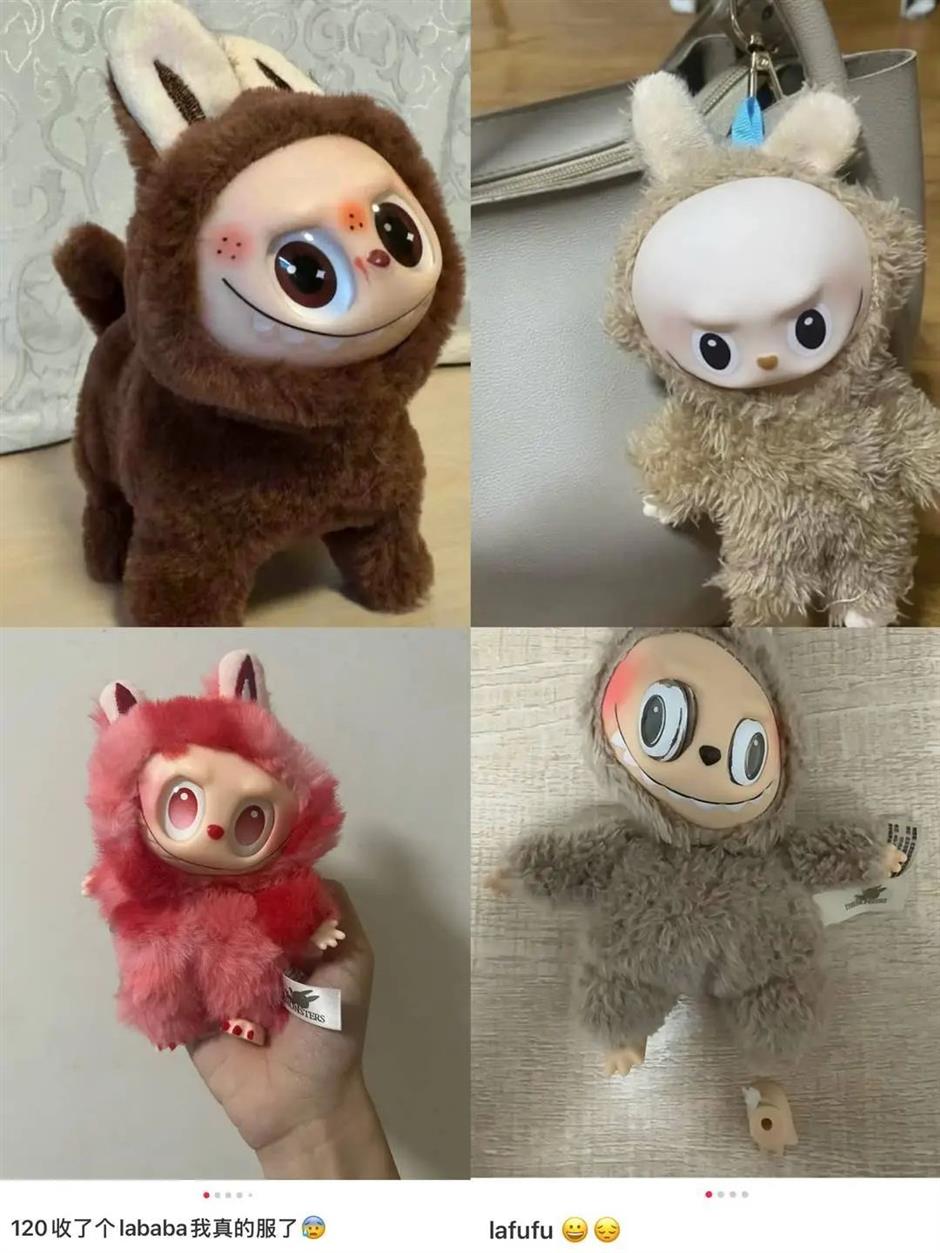Would you pay 29,000 yuan for a toy? Labubu frenzy taking over the world
Would you spend 29,000 yuan (US$4,000) on a toy?
That's the going price for a limited-edition Labubu figure from Pop Mart on China's secondhand market.
Once a niche collectible, Labubu – with its toothy grin, big eyes, and "ugly-cute" charm – has become a global sensation, setting off a frenzied hunt among fans and collectors.
Even Chinese singer Hu Yanbin was spotted spending 28,009 yuan on a Labubu x Vans collaboration via secondhand platform Poizon. Now, prices for packs of rare, discontinued Labubu editions have reached as high as 80,000 yuan for 51 figures, according to Jiupai News.

Labubu listed for sale on China's secondhand platforms.
The late April release of the Labubu 3.0 blind box series only intensified the craze. Within seconds, it sold out across e-commerce platforms.
Resellers wasted no time: figures originally priced at 99 yuan were quickly flipped to 2,600 yuan – up to 26 times the original price, Sichuan-based news outlet The Cover reported.
In cities from Los Angeles to Chicago, overnight queues formed outside stores.

The newly released Labubu 3.0 series.
How a toy became a status symbol
What's driving Labubu's cult-like appeal?
A powerful mix of celebrity endorsements, emotional design, and scarcity.
Blackpink's Lisa ignited the first wave of international buzz by posting her Labubu collection last year. Western stars like Rihanna soon followed. On May 22, David Beckham shared a photo of a Labubu doll his daughter gave him – now hanging from his backpack. These celebrity posts triggered another buying frenzy.
But beyond celebrity hype, Labubu's character taps into deeper appeal. With design elements inspired by Eastern folklore and Norse mythology, the creature offers a contrast to the soft, kawaii aesthetic of most collectibles. Its offbeat, mischievous look has struck a chord with Gen Z.
Add wearable formats like plush keychains, and Labubu becomes more than a figure – it's a portable mood statement for the new generation.
"I didn't buy the Hermès for the bag – I just wanted to give Labubu a proper home," NewsSportsGo quoted a young consumer on Wednesday.

Big money, bigger ambitions
Behind the hype, Pop Mart has grown into a serious business.
In 2024, the company reported 13.04 billion yuan (US$1.8 billion) in revenue, a jump of over 100 percent from the year before. Its adjusted net profit also nearly tripled to 3.4 billion yuan.
Pop Mart is seeing its strongest growth outside China. By the end of 2024, over 130 of its more than 530 stores and more than 190 of its 2,490 Robo Shops were located overseas.
Revenue from markets outside China jumped 375 percent to 5 billion yuan (US$700 million), making up nearly 40 percent of the company's total 1.8 billion dollar revenue, according to its annual report released on Wednesday.
It has opened stores in cities including Seoul, Tokyo, London, and Los Angeles, while also working to adapt its products for local markets.
The company is also expanding into new areas. It launched its first mobile game, opened a theme park in Beijing, and continues to develop its own characters to reduce reliance on outside licenses. These steps are part of a bigger goal: turning its popular toys into long-term brands.
Back in 2020, founder Wang Ning said Pop Mart might become "the company most like Disney in China" within five years. That goal may still be far off – but the company is clearly working toward something bigger than just selling toys.

A fan-shared photo of fake Labubu.
But as Pop Mart expands globally and demand continues to surge, the craze has also brought some headaches – especially for fans.
In London, the chaos reached a boiling point. At a Pop Mart store in Westfield Stratford, scalpers lined up through the night to snap up Labubu figures. Scuffles even broke out as people jostled for stock. The company later suspended all in-store Labubu sales across the UK, sparking a backlash from fans online.
Counterfeit Labubu figures are flooding the market, often sold at prices even higher than the originals. A hidden edition originally priced at 99 yuan now has fakes going for 180 yuan.
Sellers often respond the same way when questioned: "You can't compare it to the official ones – they're all sold out."
Even official products aren't immune to complaints. Some buyers have taken to social media to report issues like crooked heads, chipped paint, loose stitching, and uneven fur. For collectors spending hundreds or even thousands of yuan, the flaws have sparked frustration.
For all its ambitions, Pop Mart now faces a balancing act to keep the magic alive.

A scufle inside a London Pop Mart store as shoppers scrambled for Labubu.











